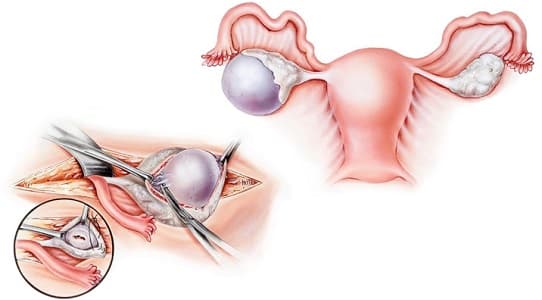For females that are still in the midst of their monthly cycle, ovarian cysts are prevalent. You might have at least 1 cyst, but you may not have realized it because it disappears on its own. When a cyst does not disappear or grows in size, complications may occur. The ovaries are indeed a pair of sex organs in the women's body that are responsible for the secretion of an egg once a month as well as the production of female estrogen and progesterone.
Ovarian cysts are fluid-filled sacs that form in the ovaries and are protected by a thin shell that can be small and innocuous. They can range in size from as little as a pea to as large as a pregnant womb. When they grow in size, twist, or burst inside the ovary, they become a source of contention. This has the potential to cause the blood flow to the ovaries to be cut off, and if left untreated, it could cause harm to the ovaries' tissues. Cysts may potentially be malignant. Because they also induce symptoms, these cases necessitate surgical intervention.

The estimated price of Ovarian Cyst Extraction Treatment in India is between Rs 1,70,000- Rs 2,00,000 depending on the procedure performed.
The length of time spent in the hospital following surgery is two to three days. The healing period following surgery is usually 3-4 weeks.
The cyst or cysts that have been excised are sent to a laboratory for testing to check there is no malignancy present. If the cyst is found to be cancerous, the surgeon may recommend that the ovaries be surgically removed.
The following procedures are necessary to diagnose Ovarian Cysts: magnetic resonance imaging (MRI), computed tomography (CT), ultrasound, blood tests, and physical exam of the pelvic region.
Cysts are divided into two categories: useful cysts & pathological cysts.
Q1. What Is The Recovery Period After Ovarian Cyst Removal Surgery?
Once the surgery is done, you may need to stay in the hospital for about a week or so. If you had the Laparotomy procedure, then you should expect to get fully recovered within 10 to 12 weeks. The recovery period can also vary on a few factors such as the age of the patient, type of surgery you had, other medical conditions, etc.
Q2. What Is The Diagnostic Procedure For Ovarian Cysts?
The most common way to diagnose or check for ovarian cysts is an ultrasound test. As you may already know that ultrasound is a painless procedure and it can help the examiner to determine the size and severity of the cysts. However, it is not that common but ovarian cyst diagnosis can be done with the help of MRI and CT Scans.
Q3. Are There Any Infertility Risks Involved After The Surgery?
It depends upon how severe your case is and what type of cysts has formed in your ovaries. Cysts forming because of endometriosis and PCOS can certainly cause infertility issues in women. Not only that such ovarian cysts also cause a lot of pain and internal bleeding. Other types of cysts that are smaller in size and don’t have that much of symptoms, won’t affect fertility in most cases. However, it is always advised to consult this possibility with your doctor or surgeon before the surgery.
Q4. Are Ovarian Cysts Common?
It may seem like a rare thing, but ovarian cysts are very common among women. During the menstrual cycle, women usually develop such cysts, and in most cases, these cysts don’t cause any pain. However, 1 in 10 women has severe pain issues because of ovarian cysts, and in such cases, doctors suggest ovarian cyst removal surgery.